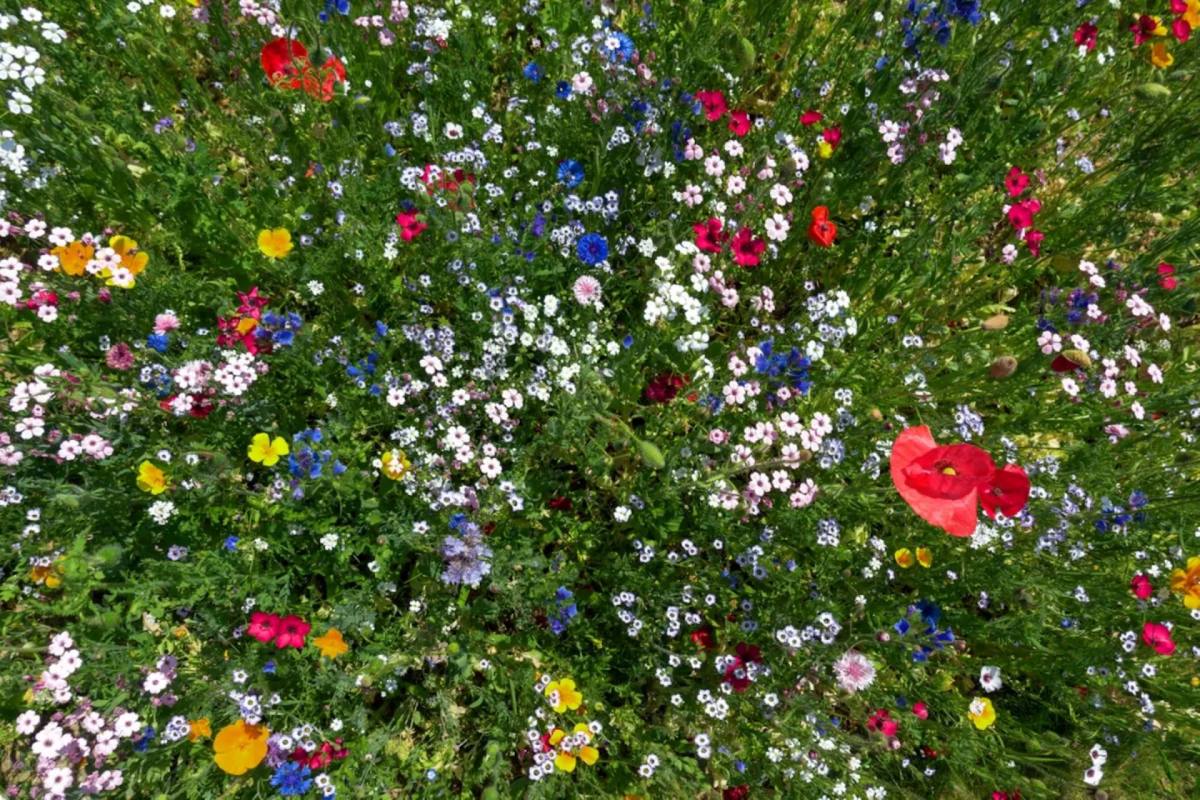If you're tired of the constant mowing and general maintenance a traditional lawn requires, consider swapping it out for a tapestry lawn. Also known as a meadow lawn, the aesthetically pleasing alternative to turfgrass is growing increasingly popular among homeowners.
As the name suggests, a tapestry lawn includes a variety of low-growing, colorful flowers and plants that end up resembling a perfectly stitched quilt. Because the lawn uses native, noninvasive plants, it follows nature's design and supports biodiversity much better than a typical yard.
🗣️ If you were to switch from a grass lawn to a more natural option, which of these factors would be your primary motivation?
🔘 Making it look better 🌱
🔘 Saving money on water and maintenance 💰
🔘 Helping pollinators 🐝
🔘 No way I ever get rid of my lawn 🚫
🗳️ Click your choice to see results and speak your mind
What you plant will largely depend on your location, but some options that do well in many areas include creeping thyme, Dutch white clover, and many types of sedum, according to Architectural Digest. You can also check the USDA Plant Hardiness Zone Map to give you a better idea of plants native to your region.
"Rewilding" your yard offers numerous benefits, such as saving you tons of time and money on lawn equipment and general upkeep. As Architectural Digest reports, meadow lawns only need to be mowed three or four times per year.
And, according to our research, you can save nearly $3,000 on water bills, fertilizers, and toxic pesticides over 10 years by opting for an eco-friendly yard. Even rewilding a small portion of your lawn can help you cut your monthly bills.
Plus, a tapestry lawn can help conserve water, which is especially important as droughts happen more frequently worldwide. A native lawn can reduce your water usage by a whopping 1,750,000 gallons over a decade, since perennials are already adapted to the local environment.
As an added bonus, native plants will attract more pollinators like bees and butterflies. Not only are these cute creatures a welcome sight in your yard, but they're also essential for human survival since one out of every three bites of food we eat comes from plants they've pollinated.
Even if you don't have a green thumb, it's fairly easy to plant a tapestry lawn. Simply dig up your existing grass, add compost or mulch as needed, choose your favorite low-growing native flowers or grasses, and watch the magic happen. If that's still too much for you, companies like Yardzen are available to help rewild your lawn.
"The strategy in these landscapes is to make sure to mass-plant species. Think three, five, or seven of a kind depending on the scale of the site (use larger masses for larger sites)," Benjamin Vogt, the owner of Monarch Gardens LLC, said in an interview with Martha Stewart. "Then, plants self-organize over time, showing us where they want to be, which is exciting and highly instructive (and even humbling)."
Join our free newsletter for easy tips to save more, waste less, and help yourself while helping the planet.









